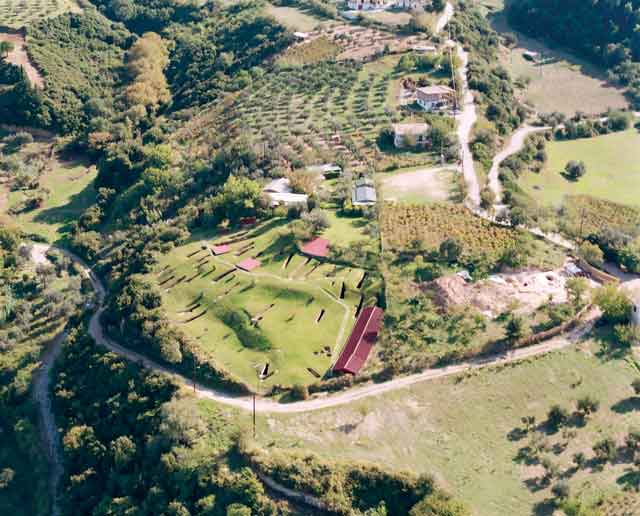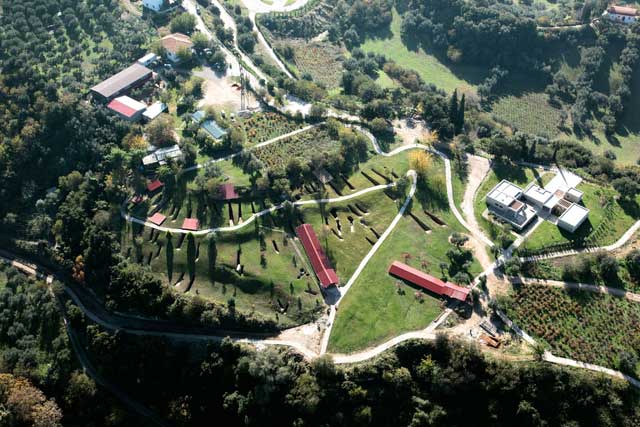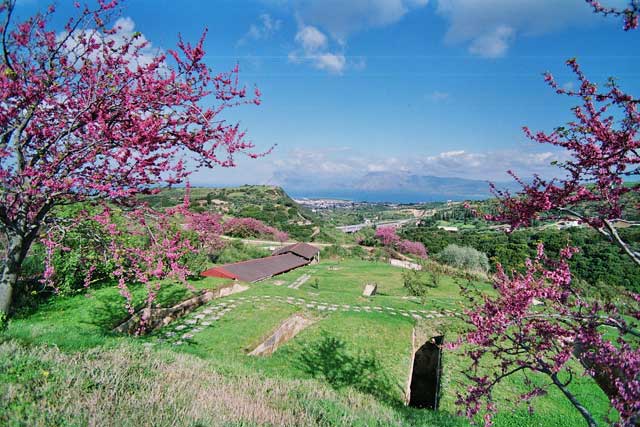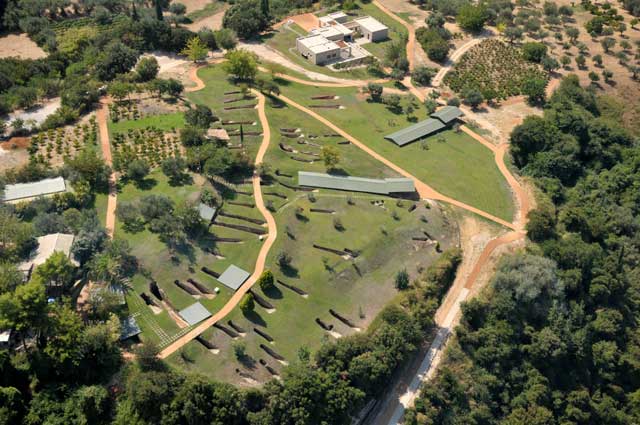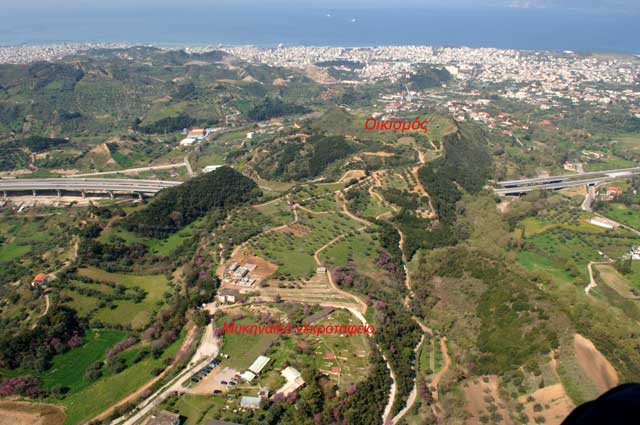5000 Years of history invite you
From the modern port start a trip back in time: Feel the evidence of the Roman colony which flourished in Patras 2000 years ago. Admire the art and technique in the achievements of the ancient Greeks in ancient Plevrona. Discover the signs of the last strongholds of the Mycenaean world in Voudeni and Dymaion Wall. Visit the new Archaeological Museum, where the architecture of today and tomorrow opens a window to the culture of yesterday.
Archaeological Museum of Patras
The new Archaeological Museum of Patras is situated at the north entry of the city, covering a total surface of 5.955 sq.m. It has three large halls for the permanent exhibition, a hall for periodical exhibitions, and a number of auxiliary spaces and laboratories.
The permanent exhibition presents findings dating from 3000 b.C. to the 4th century A.D., from the city of Patras and from areas of the South and Western Achaia. The exhibition develops three large thematic units, covering the private life, the public life and the necropolis. In all units, items from the Mycenaean era (1500-1000 B.C.) hold a significant position, as this was a period of prosperity for the area, and items from the Roman era (1st century B.C. – 4th century A.D.), with an impressive set of mosaic floors standing out.
Useful Information:
Telephone no: +302610420615
Operating hours: Weekdays except Monday, 08:30 – 15:00
Ticket: 4 euros
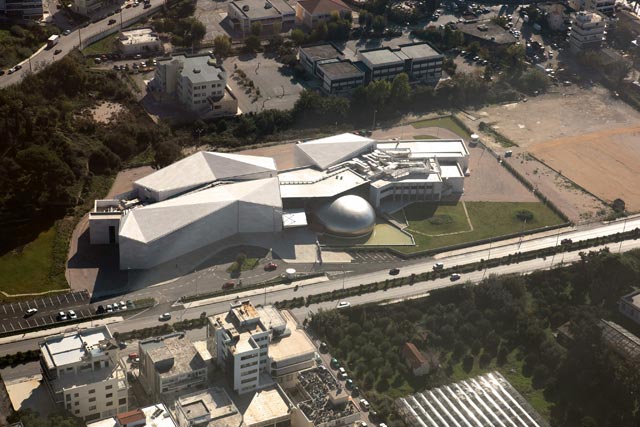
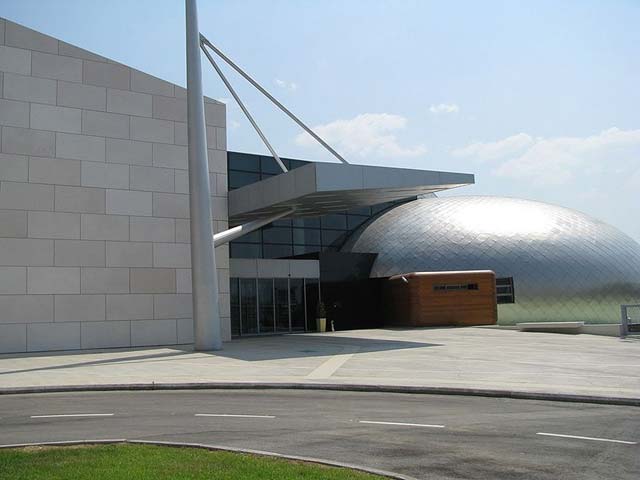
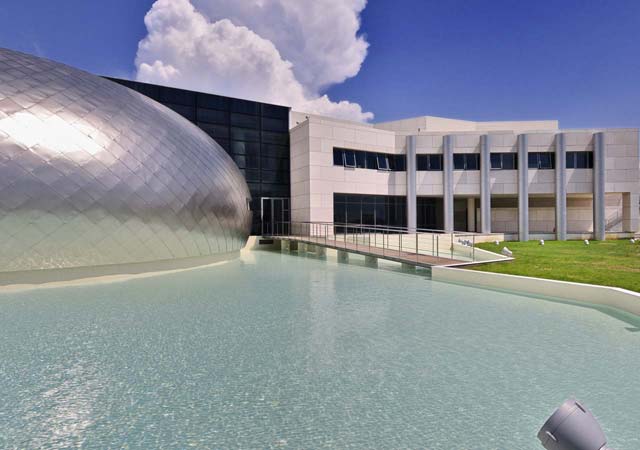
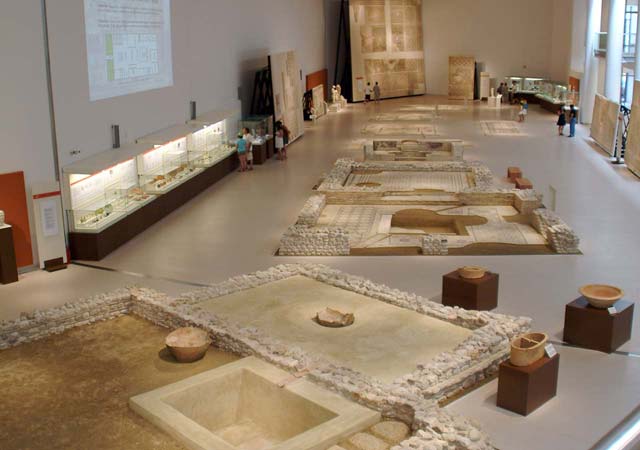
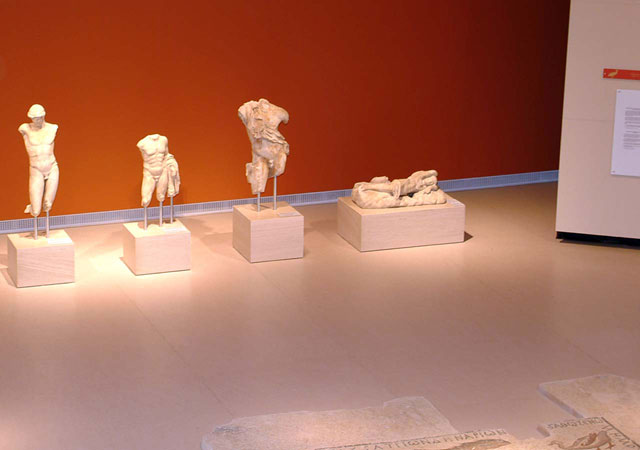
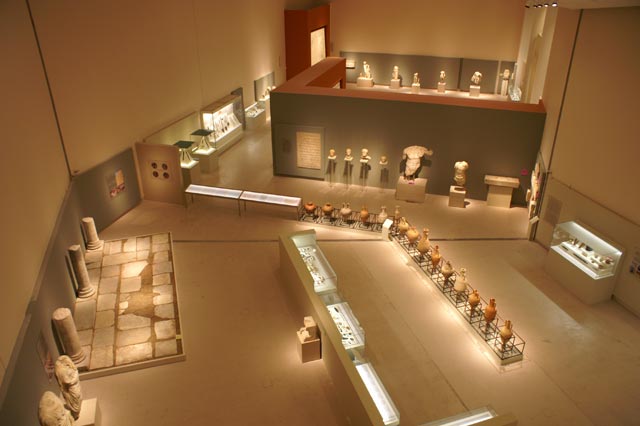

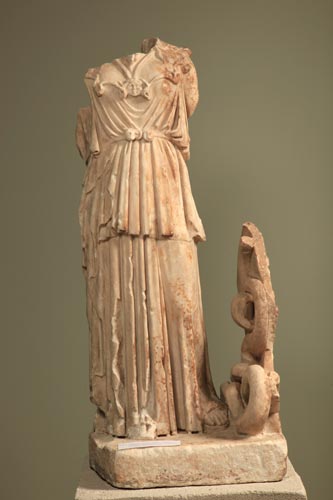

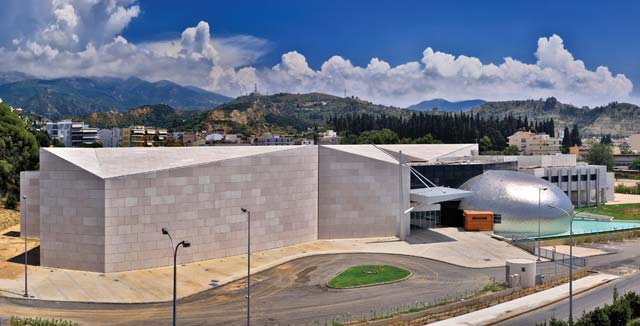
The Stadium or Auditorium
The Roman Stadium, the revelation of which is not complete yet, was a public building intended for the recreation of the public and was built in the 1st or 2nd century A.D.; it is longitudinal with external dimensions: 200m. length, 90m. width.
Its long sides are slightly curved, while two sphendones (horseshoes) are formed on its narrow sides.
The eastern long side of the stadium is supported by a natural hillside and the other sides are supported by strong retaining walls. On the side supported on the hill there were two or three cornices, under which underground corridors (cryptoportici) and auxiliary spaces for the athletes and the events are preserved to this day.
Various sports and cultural events were conducted at the stadium, among which the “Caesareans”. Gladiator fights were held at the stadium, as confirmed by Pausanias report on the existence of Nemesis, protector of gladiators, which was situated near the north entrance of the building.
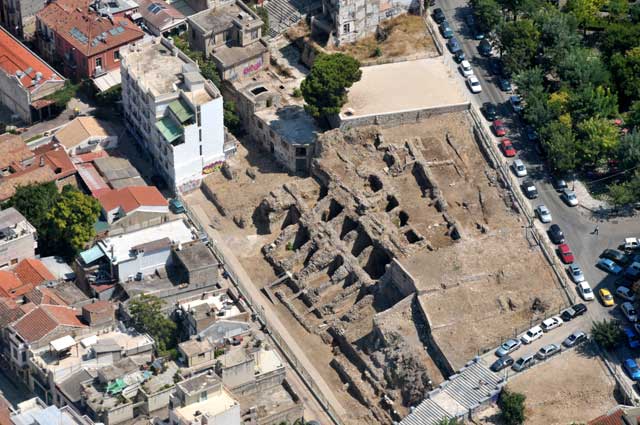
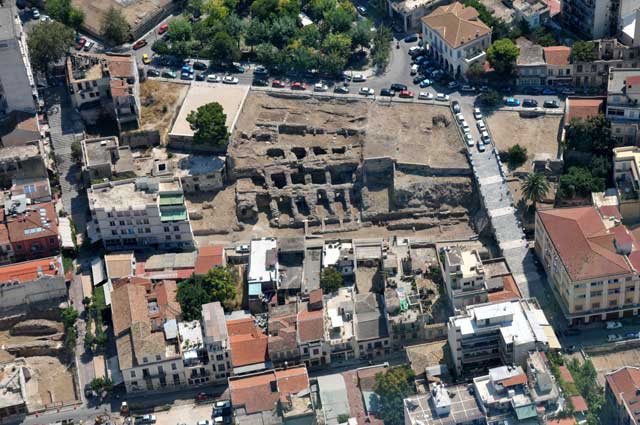
The Aqueduct
With the great increase of the residents of Patras in the Roman period and probably due to water scarcity, the Aqueduct is built. It started at the springs of the Diakoniaris River, in the Romanou area and after a course of 7 kilometres ended in a big tank near the Castle. Water was transferred in built ducts, either underground passing through hillsides, or above ground ducts, placed on a series of arcades, from one to three in height, bridging canyons and valleys. From the tank, the water was supplied to the city through a network of ducts, under the streets and from there in the houses.

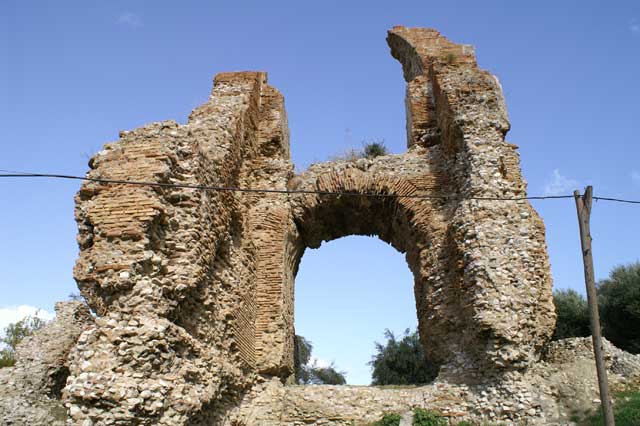
The Odeon
According to Pausanias, the most presentable of all Greek Odeons after the Herodeion, was the Odeon of Patras. Built probably in the 2nd century A.D. it stopped being used after the 3rd century A.D. It was revealed in 1889 and its restoration was completed in 1961, with the contribution of local architect I. Vasileiou. It consists of the main parts of a theatre, which are the koilon, the orchestra and the scenic structure. The koilon, where the traffic of viewers was facilitated by stairs, is separated by a corridor (diazoma) in two sections, the upper and the lower. The orchestra has marble coating and is separated from the koilon by a low marble parapet. The scenic structure consists of the proscenium, the stage (skene), and the side-scene (paraskenia); on the proscenium there are alcoves, where statues were placed.
Useful Information:
Telephone no: +30 2610 220829
Operating hours: Weekdays except Monday, 08:30 – 15:00
Free Entrance
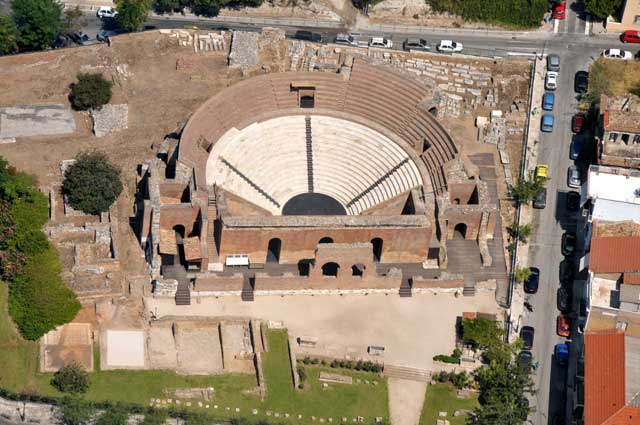
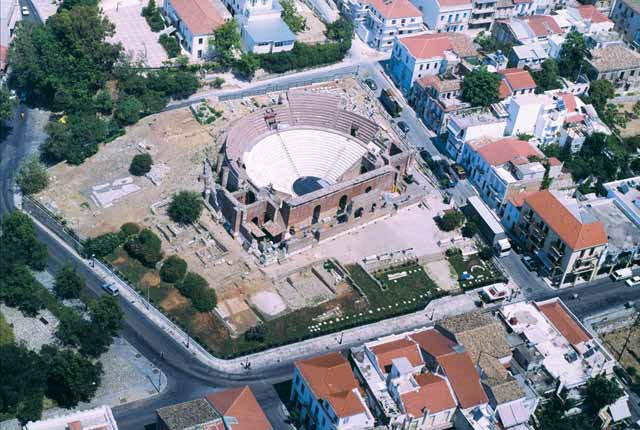
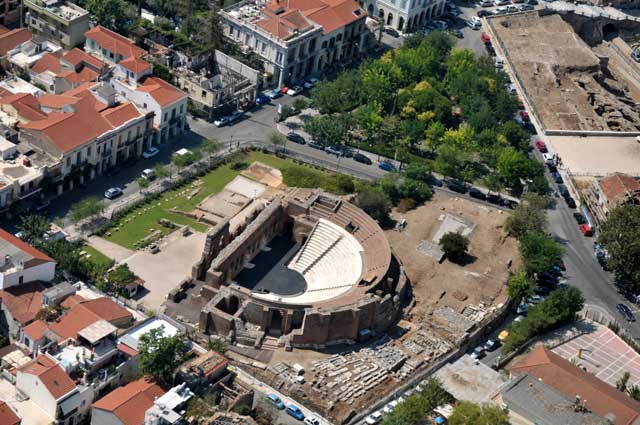
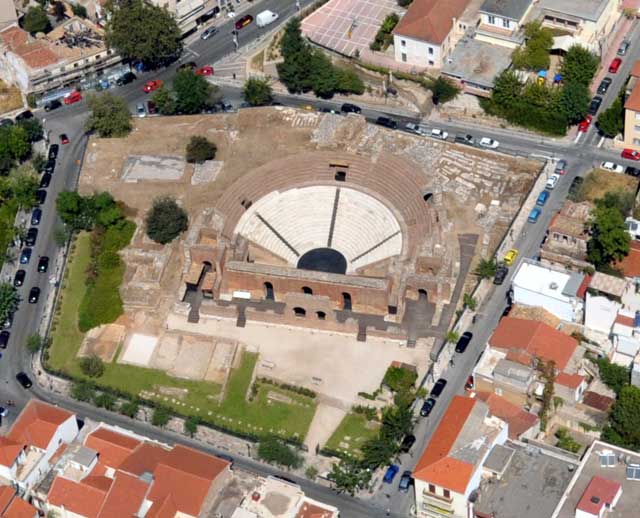
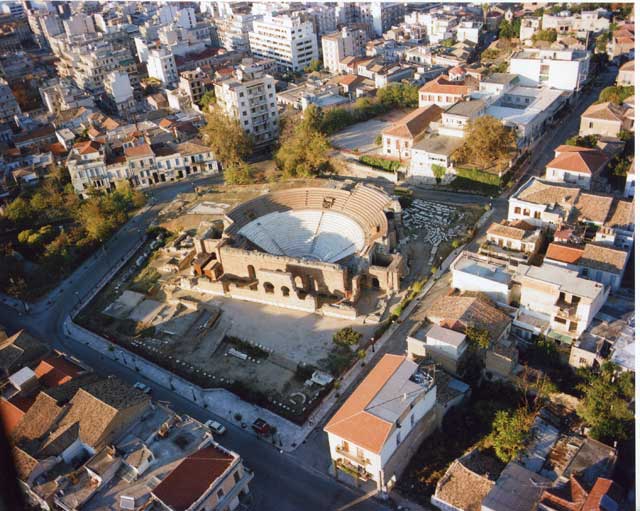
The Roman bridge
Not far away from the city centre of Patras, to the north, one of the best preserved bridges of the Roman period (4th century A.D.) survives to this day. It was built over the river called Kallinaos in antiquity.
The bridge was part of a public street (via publica) connecting Patras with Aigio. It consists of two arches and is built by typical Roman walls made of bricks and stone foundations, while the part of the street passing over the bridge is built by slab track, where the grooves from the wheels of the carriages can be seen.
There is a single-arched, smaller bridge built of limestone, to the south of the above, dated from the 1st century AD. After the construction of the double-arched bridge, its opening was closed, while at the same time walls were built for the encasing of the riverbed.
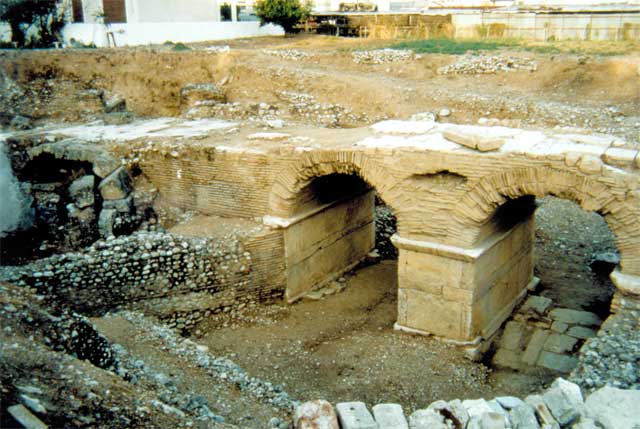
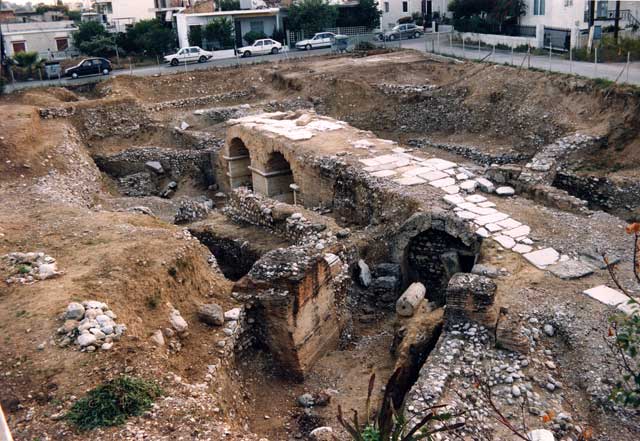
Castle of Patras
It was established in the 6th century A.D., during the reign of Justinian. The history of the Castle is connected to the history of Patras. It was built with construction material from the ancient Acropolis, situated on the same spot and which had collapsed at the time.
The castle consists of a triangular external yard, reinforced with towers and bastions, originally protected by a deep trench and an internal yard, built on the North-Eastern corner and also surrounded by a trench.
The castle, which was remained in continuous use for the defence of the city and used as administrative and military centre until the 2nd World War, was conquered by the Franks, the Venetians, the Palaiologians and the Turks.
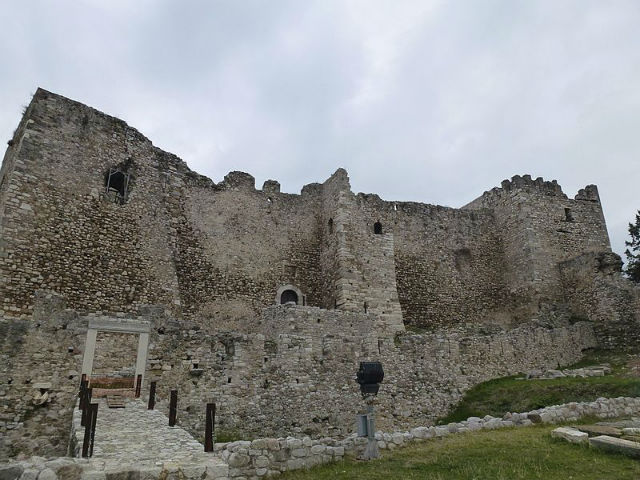
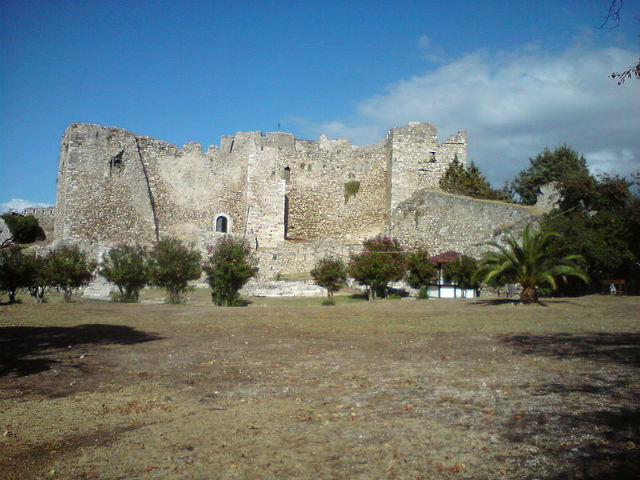
Castle of Rion
A defence project of Sultan Bayezid II, it was built across the castle of Antirrion, so that he would have control of the sea passage, from the Ionian to the Corinthian Gulf, which was called “Kioutsouk Tsanak Kale”, namely “Mikra [Small] Dardanellia.
The castle is surrounded on one side, by a broad trench with seawater, as it is linked to the sea, which engulfs the rest of the castle. In the trench, there are two external bastions, connected with the main castle with stone bridges. It has two gates, the sea gate and the central gate.
It is used for cultural events.
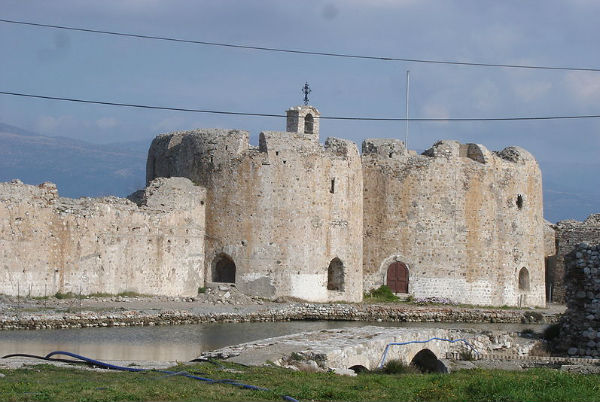
Αchaia Clauss
In 1861, Gustav Klaus founded a wine industry in Petroto, supplied primarily from private vineyards. The company focused on producing fine wines such as Mavrodaphne. Of particular interest is the “Imperial cellar”, where all the barrels bear names in honour of visits by Greek and foreign royalty. The oldest wine of Greece, an old Mavrodaphne of 1873 is kept in this place. All these years, Achaia Clauss has seen great glory. The important personalities who visited the winery include Otto von Bismarck, Franz Liszt, Eleftherios Venizelos, Melina Mercouri, the Empress Sissi of Austria, General Montgomery, Alexander Fleming, the Ecumenical Patriarch Bartholomew, Paul Koundouriotis, Aristotle Onassis, Omar Sharif and the Kings Gustav Adolf of Sweden, Georgios I, Constantine I, Georgios II of Greece, Queen Alexandra of Great Britain, Louise of Sweden, Queens Olga and Sophia of Greece and Princess Marie Bonaparte.
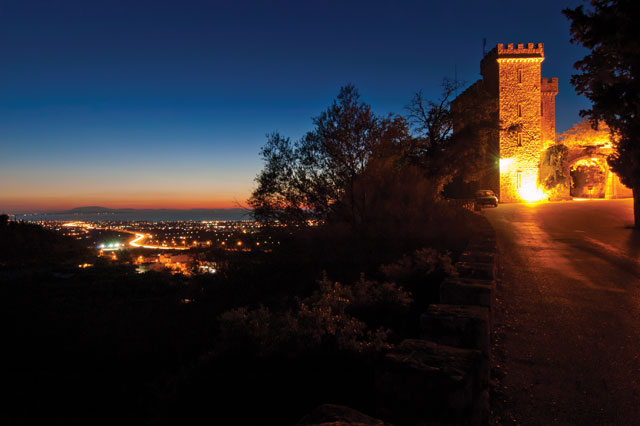
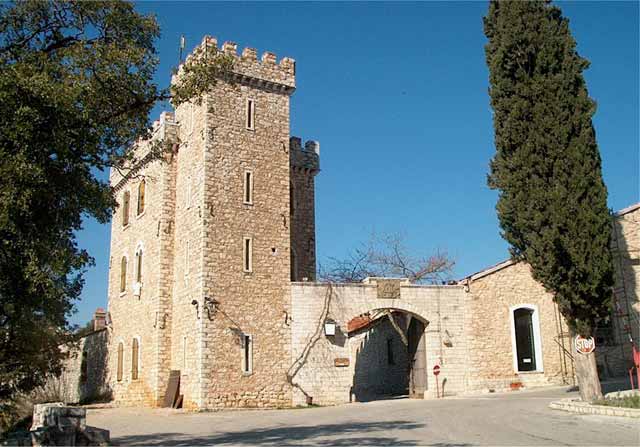
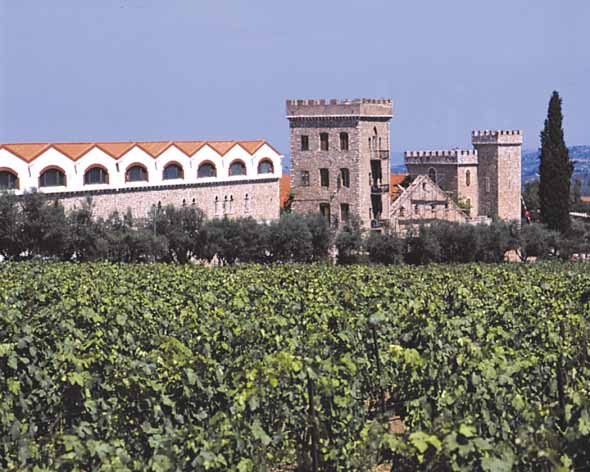
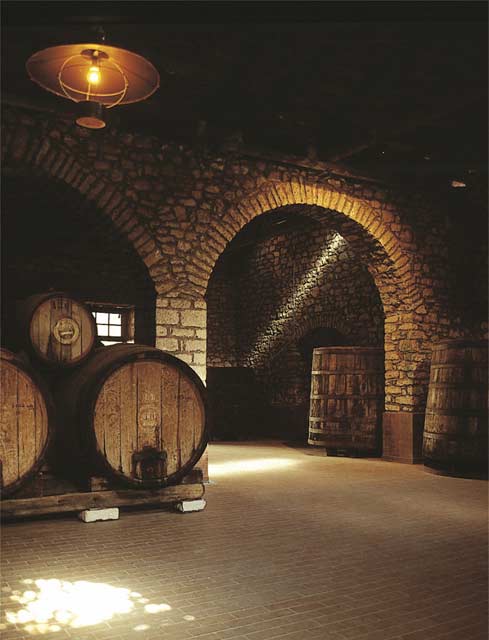
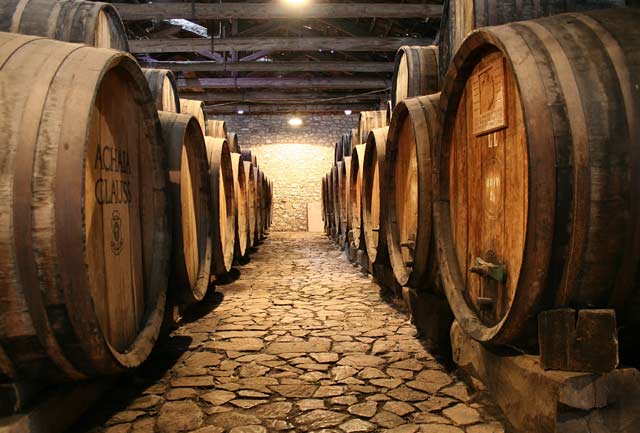
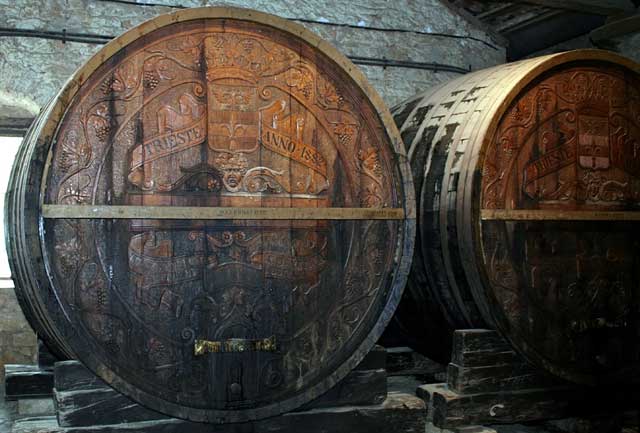
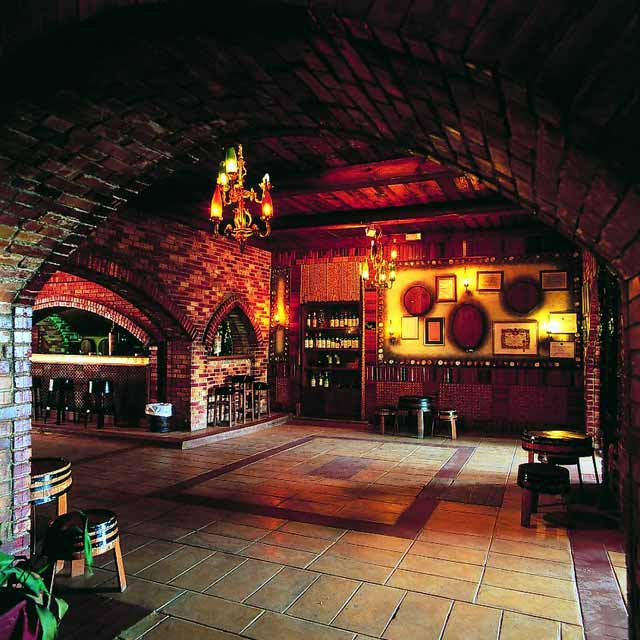

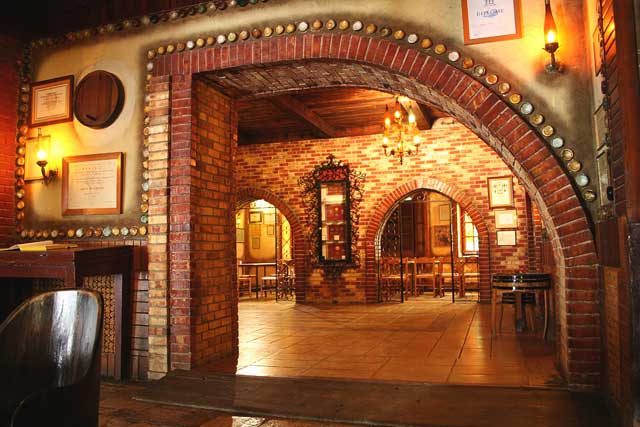
Rion-Antirion Bridge Museum
The completion of the Rion-Antirion Bridge marked a new era in traffic and transport for the entire western Greece. The Charilaos Trikoupis bridge (so named in honour of the first Greek politician who envisioned the project) which is the landmark of Greece in the 21st century, radically changed the geopolitical and economic landscape, annihilating distances and ushering in a new era. The Rion-Antirion Bridge is the longest multiple exposure cable-stayed bridge in the world, with a main board of 2,252 meters. Its foundations go down to 65 meters under sea level. Both this and the diameter of its foundations, at 90 meters, hold world records for bridges. So far, the bridge has been honoured by the international scientific community with nine international awards. The premises of the bridge tolls in Antirrion host an elegant permanent exhibition showing the history of the bridge’s construction.
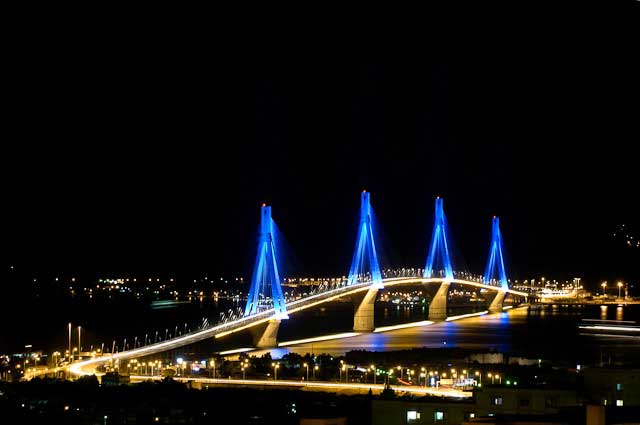
Archaeological Site of Voudeni
The Mycenaean settlement of Voudeni, 8km from centre of Patras, is one of the most important locations of the Mycenaean era, with a duration of almost five hundred years (1500 – 1000 B.C.), while the same location seems to have been populated from the Middle Helladic era up to the late Roman era (1800 B.C – 4th century A.D.).
The special characteristic of Voudeni is that both the village and the cemetery of the Mycenaean settlement have been investigated.
The village is located on the top of a hill with panoramic view to the Gulf of Patras and the Ionian. To the southeast of the village lies the necropolis of Voudeni, where to this day 78 tombs have been found and investigated, dug radially in the soft rocks of the area.
The study of the findings revealed elements suggestive of the wealth of the residents of the Mycenaean settlement, of their commercial and cultural contacts with other areas, such as Messinia, Lakonia, Argolidokorinthia, Crete, Italy, Levant-Anatolia and others, and promote the village of Voudeni as an important and significant Mycenaean centre in Achaia.
